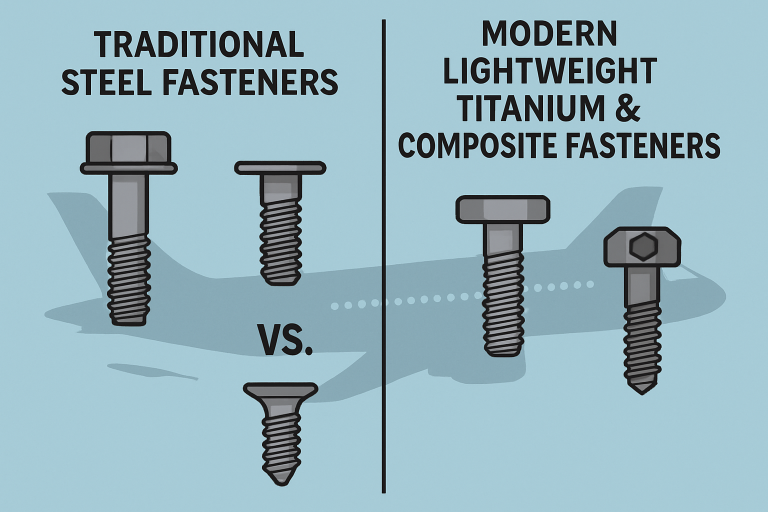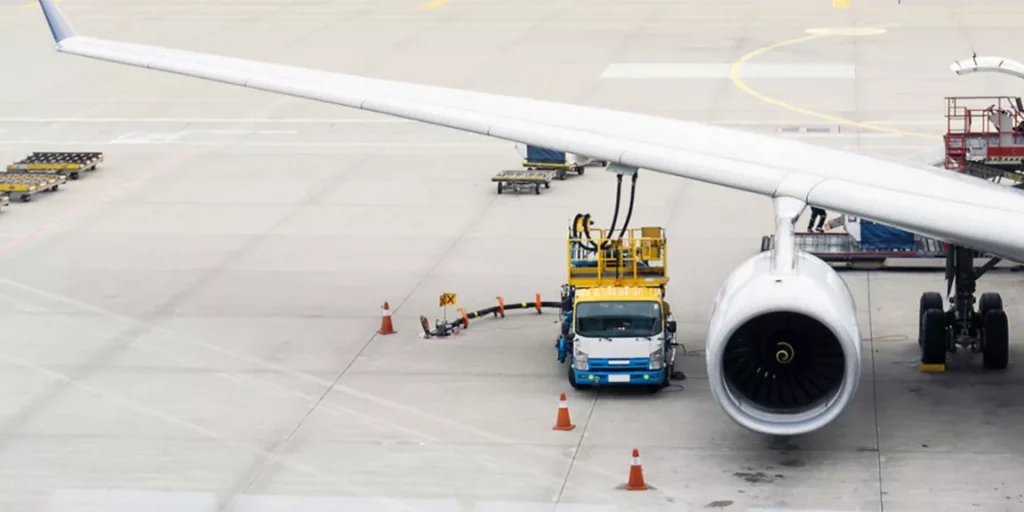Key Takeaways
- Lightweighting is central to achieving sustainability and fuel efficiency in aviation.
- Even small components, such as fasteners, play a significant role in reducing the total aircraft weight.
- Material innovation (titanium, composites, polymers) enables strength without added mass.
- Advanced manufacturing methods, such as 3D printing and CNC machining, improve precision and reduce waste.
- Collaboration among manufacturers, engineers, and regulators ensures safety and compliance with certification standards.
Introduction to Lightweighting in Aviation
Lightweighting has become a defining strategy in aviation’s ongoing journey toward heightened fuel efficiency and sustainability. Airlines and manufacturers are increasingly focused on this approach, exploring new materials and technologies that help minimize aircraft weight without compromising safety or performance. While attention often focuses on large structural components, a subtle but essential part of this transformation involves fasteners—the tiny connectors and joiners that hold aircraft structures together. The selection of fasteners and their materials is a critical factor for manufacturers and hardware distributors seeking to offer the next generation of aircraft components.
With modern commercial aircraft comprising millions of fasteners, the weight and durability of these elements significantly impact overall efficiency. Recent advancements in design and material science ensure that even these small parts play a pivotal role in reducing fuel consumption for both passenger and cargo fleets. Reimagining fasteners means more than just lighter planes—it means tangible cost savings, regulatory compliance, and smaller environmental footprints.
The Impact of Weight Reduction on Fuel Efficiency
There is a clear and calculable connection between the weight of an aircraft and its fuel economy. According to a study by the U.S. Department of Energy, reducing just 10% of an aircraft’s mass translates to a 6-8% improvement in fuel efficiency. With escalating fuel costs and mounting pressure to cut carbon emissions, airlines and OEMs are under constant incentive to seek out every opportunity for weight reduction, from large wing panels down to the smallest bolt.
A kilogram saved at takeoff accumulates into thousands of gallons of fuel saved each year per aircraft, as reported by airlines such as Southwest and easyJet. For a global fleet, the commercial and environmental impacts are substantial, prompting companies to adopt lightweighting as a crucial pillar of their operational strategy.
Innovations in Fastener Materials
Historically, steel has dominated the production of aviation fasteners, but the industry has rapidly shifted toward lighter, more resilient alternatives. Titanium is now widely favored, boasting around 40% less weight than traditional steel fasteners and offering exceptional strength-to-weight performance. In addition to titanium, aluminum and high-tech composite polymers are making notable inroads, supported by ongoing improvements in mechanical properties and corrosion resistance.
By deploying fasteners constructed from these advanced materials, manufacturers achieve significant reductions in airframe weight while preserving, and often enhancing, structural performance. The aerospace industry’s embrace of these changes is clear in new aircraft designs from leading manufacturers and in the supply chain roadmaps of component specialists.

Advanced Manufacturing Techniques
The advent of additive manufacturing, also known as 3D printing, has profoundly impacted the design and production of aerospace fasteners. This technology enables the creation of custom shapes and intricate internal geometries that were previously unattainable with conventional processes, resulting in lighter components that meet rigorous aerospace certification standards. GE Aviation, for example, now produces engine components, such as fuel nozzles, using additive manufacturing, which reduces their weight by over a quarter and decreases assembly complexity by combining what would have been dozens of parts into one.
Innovative manufacturing methods, such as computer numerical control (CNC) machining and powder metallurgy, ensure tighter tolerances and optimized material use, further reducing part weight and enhancing reliability.
Structural Adhesives: A Complementary Approach
Alongside advanced fasteners, structural adhesives now play a central role in modern airframe assembly. Used in combination with mechanical fasteners, adhesives offer enhanced load distribution and bond a wider range of materials, opening up new design possibilities and additional weight reductions. The adoption of these technologies has accelerated on next-generation programs such as the Boeing 787 and Airbus A350, underscoring the industry’s interest in holistic lightweighting strategies.
By enabling more uniform stress distribution and allowing for fewer fasteners overall, structural adhesives help decrease overall aircraft weight, simplify assembly, and improve fatigue resistance—major wins in the quest for more efficient aviation.
Challenges and Considerations
Despite the promise and proven benefits of lightweighting, several hurdles persist. Advanced materials, such as titanium and high-grade polymers, often command a premium cost, making widespread adoption an economic consideration for manufacturers and airlines alike. Additional challenges arise in validating the fatigue resistance and predictability of these new materials and fastener designs, especially as they are subjected to rigorous FAA and EASA certification processes.
Careful integration with legacy airframe components is crucial, as is ongoing collaboration among engineering teams, supply chain partners, and regulatory authorities. Each innovation requires a detailed evaluation to ensure compliance, safety, and operational readiness before it joins the global fleet.
Final Thoughts
Innovations in fastener design, material science, and advanced manufacturing are critical enablers of aviation’s lightweighting revolution. These small but indispensable components deliver significant fuel savings, environmental benefits, and cost reductions for operators worldwide. As technology continues to evolve, the partnership between engineers, manufacturers, and hardware distributors will remain central to aviation’s progress toward more sustainable and efficient flight.

